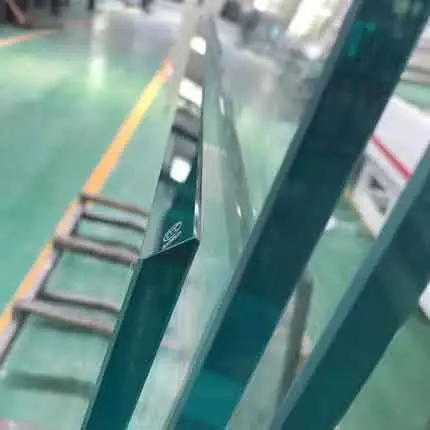
Heat strengthened glass (HSG) is a type of glass that has been subjected to a heat treatment process that increases its strength and durability. This process, typically performed by specialized heat treated glass suppliers, involves heating the glass to a high temperature and then rapidly cooling it. This causes the surface of the glass to be in compression, while the interior is in tension. This creates a stronger glass that is more resistant to breakage than annealed glass.
Heat strengthened glass is typically about twice as strong as annealed glass of the same thickness. It is also more resistant to thermal stress and impact. This makes it a good choice for applications where safety and durability are important, such as:
Doors and windows
Shower enclosures
Furniture
Appliances
Automotive glass
Due to its enhanced properties, heat strengthened glass is often used as a type of custom architectural glass in various construction and design projects.
Glass Thickness | 2mm - 2.5mm - 3mm - 4-5mm - 6mm - 8mm; 10 mm - 12mm - 15mm - 19mm - 22mm - 25mm |
Glass Color | Clear, blue, bronze, green, gray, tinted reflective, ultra clear, online/offline lowe etc; |
Min size | 50x50mm; |
Max size | 3300x16000mm; |
Shape in | Flat, curved, double or various curved; |
Extend processing | Acid, AR, AG coating, silk screen/digital printing, hole, notch etc; |
Heat-strengthened glass is a type of glass that undergoes a specific heat treatment process to enhance its strength and durability compared to untreated glass. This process involves heating the glass to a temperature below its softening point and then cooling it in a controlled manner. The result is a glass product with increased resistance to thermal stress and mechanical strength, making it less prone to breakage.
Characteristics and uses of heat-strengthened glass:
1. Strength: Heat-strengthened glass is stronger than regular annealed glass but not as strong as fully tempered glass. It typically has a surface compression strength that is approximately twice that of annealed glass.
2. Safety: Unlike fully tempered glass, heat-strengthened glass does not break into small, harmless fragments upon fracture. Instead, it breaks into larger pieces, which may still pose a risk of injury. However, the broken pieces are generally smaller and less hazardous than those from annealed glass.
3. Thermal Resistance: Heat-strengthened glass has improved resistance to thermal stress, making it suitable for applications where temperature variations are a concern. It can withstand higher temperature differentials compared to annealed glass.
4. Applications: Heat-strengthened glass is often used in situations where safety and strength are important, but the full breakage characteristics of tempered glass are not required. Common applications include building facades, curtain walls, windows, doors, and other architectural elements.
5. Code Requirements: Building codes and standards may dictate the use of heat-strengthened or tempered glass in specific locations within a structure based on safety considerations.
It's important to note that while heat-strengthened glass provides improved strength and safety compared to annealed glass, it may not be suitable for all applications. Designers and architects should carefully consider the specific requirements of each project and choose the appropriate type of glass based on factors such as safety, structural needs, and local building codes.
Pls contact us if you have any inquire or questions, thank you.
No.12111, JINGSHI ROAD, LIXIA DIST, JINAN CITY, SHANDONG PROVINCE, CHINA